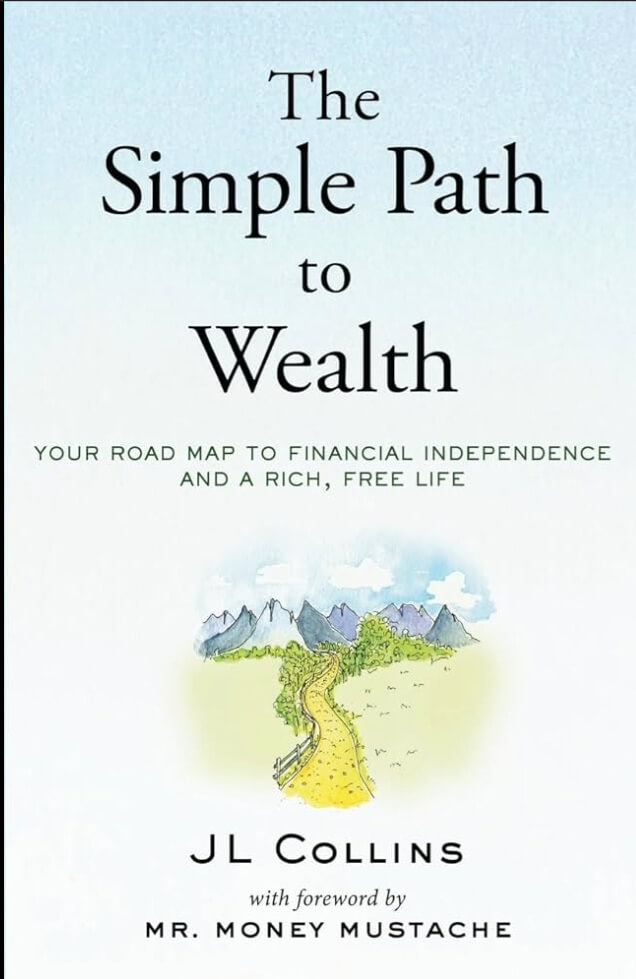Financial Freedom Through Index Investing — Or a Reductive One-Size-Fits-All?
🎯 Introduction: A Cult Classic With a Catch
JL Collins’ The Simple Path to Wealth has become a holy text for fans of the FIRE (Financial Independence, Retire Early) movement and minimalistic investing. Based on a series of letters he wrote to his daughter, the book promises to take the confusion out of money management and boil down financial independence to a simple formula: spend less, invest in VTSAX, and wait.
It sounds clean, smart, and accessible — and in many ways, it is.
But critics argue that the book’s simplicity is also its Achilles’ heel. In an increasingly complex and economically unequal world, The Simple Path to Wealth can come off as smug, tone-deaf, and overly reliant on assumptions that don’t hold up for many readers.
🧠 Core Philosophy: Index and Chill
At the heart of JL Collins’ strategy is a love letter to Vanguard’s Total Stock Market Index Fund (VTSAX). His core advice:
Avoid debt, save 50% of your income, invest everything into low-cost index funds, and let compounding do its magic.
Collins champions what he calls “F-You Money” — a financial cushion that gives you the freedom to walk away from anything or anyone that doesn’t serve you.
The pitch is alluring in its clarity. No stock picking. No complicated portfolios. Just buy VTSAX and relax. But this approach assumes a level of income, privilege, and risk tolerance that many readers simply don’t have.
📦 What’s Inside: Letters, Lectures, and a Lot of VTSAX
Collins organizes the book as a conversational series of lessons, often addressed to his daughter, interspersed with anecdotes, rants against financial advisors, and a heavy endorsement of Vanguard funds.
Some of the key topics include:
⦁ Why most financial advice is garbage
⦁ The dangers of debt
⦁ The power of compound interest
⦁ Why index funds beat actively managed funds
⦁ How to handle market downturns (spoiler: do nothing)
It’s digestible and often witty, but the book quickly begins to feel repetitive. Nearly every chapter circles back to the same conclusion: Just buy VTSAX.
For a book marketed as a “path,” the terrain is surprisingly flat.
🗣️ What Readers Love (Based on Positive Reviews)
✅ 1. Clarity and Simplicity
In a finance world bloated with jargon and overcomplication, Collins cuts through the noise. His disdain for Wall Street salesmanship is refreshing, and readers overwhelmed by investment choices find comfort in his minimalist approach.
✅ 2. Relatable Tone
The tone is conversational, often humorous, and refreshingly unpretentious. For many, it feels like financial advice from a wise uncle — not a sales pitch.
✅ 3. Strong Case for Index Investing
The book effectively defends index funds with compelling evidence. Readers unfamiliar with the efficiency of passive investing come away feeling more confident and less intimidated.
❌ Where It Falls Flat (Based on Critical Reviews)
❌ 1. Overly Simplistic and Unrealistic for Many
Saving 50% of your income? That’s a luxury few can afford in cities with high rent, medical debt, or childcare costs. The book is written for readers with high incomes and low fixed expenses — a demographic that doesn’t reflect the financial reality of most people.
❌ 2. Ignores Nuance in Investing
Collins insists there’s no need for diversification beyond U.S. total market index funds. He dismisses international stocks, REITs, bonds (until very late in the book), and other asset classes that help smooth returns. Critics say this is lazy advice disguised as wisdom.
❌ 3. Anti-Adviser Rhetoric Feels Outdated
While Collins is rightly skeptical of high-fee financial advisers, his complete rejection of professional guidance feels outdated in a world where fiduciary, fee-only advisors exist and can provide value — especially for those with complex needs like estate planning, tax strategy, or business finances.
❌ 4. Lack of Psychological Insight
Modern finance books increasingly integrate behavioral psychology. The Simple Path to Wealth doesn’t. It assumes that once you know what to do, you’ll do it — ignoring the reality of emotional investing, panic selling, or lifestyle inflation.
🔍 Deeper Analysis: Is Simplicity Always Smart?
While Collins’ mantra of “buy and hold” is wise, the application is not as universal as he suggests. The book assumes:
⦁ A high, steady income
⦁ No major debt burden
⦁ A strong risk tolerance
⦁ A multi-decade investment horizon
If any of those are missing, his “simple path” becomes significantly more treacherous.
He also fails to provide meaningful advice for people in different life stages. Want to retire early but started late? Have debt? Live outside the U.S.? Want to factor in ESG investing or rental properties? You’re on your own.
📖 Comparison: How Does It Stack Up?
Compared to books like The Psychology of Money (Morgan Housel) or I Will Teach You to Be Rich (Ramit Sethi), The Simple Path to Wealth is far more dogmatic. Collins offers fewer options, less flexibility, and almost no discussion of how to adapt to different financial realities.
While Your Money or Your Life may overshoot on philosophy, at least it acknowledges that money means different things to different people. Collins treats money like math: simple, clean, and without emotion.
But anyone who’s lived through a bear market — or a layoff — knows better.
💬 Reader Reviews: From Gospel to “Not That Helpful”
“This book changed my entire approach to money. I moved everything to VTSAX and sleep better at night.”
— 5-star Amazon review
“If you’re making six figures with no kids or debt, sure — this works. Otherwise, it’s fantasy.”
— 3-star Goodreads review
“The advice is solid — but painfully repetitive and lacks depth. I wanted more nuance.”
— Reddit user, r/FIRE
“I’m not sure telling your 20-something daughter to just save half her income and ignore the world is helpful advice.”
— Blog comment on Financial Samurai
⭐ Final Verdict: ★★☆☆☆ (2.5/5)
The Simple Path to Wealth delivers clear, strong advice for a narrow slice of the population. For high earners who love spreadsheets, distrust complexity, and want to opt out of financial decision-making, this book is near perfect.
For everyone else, it’s a blunt instrument masquerading as a Swiss Army knife.
It offers little for those navigating debt, low income, economic uncertainty, or non-traditional careers. Its disdain for nuance makes it feel more like financial dogma than a useful toolkit.
Who Should Read It:
⦁ FIRE adherents looking for confirmation
⦁ Young, high-income earners with no major obligations
⦁ Fans of minimalism and index investing
Who Might Want to Skip It:
⦁ Readers seeking a tailored, flexible financial strategy
⦁ People with complex financial situations
⦁ Anyone looking for a modern, inclusive financial roadmap
Bottom Line:
“Great advice for the privileged few. For everyone else, it’s just another oversimplified path to disappointment.”




